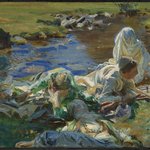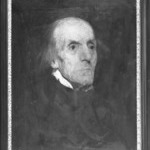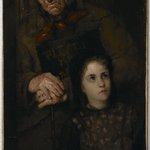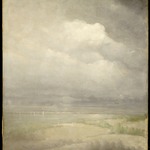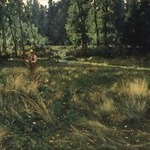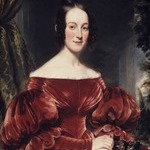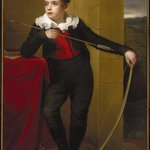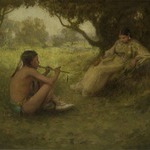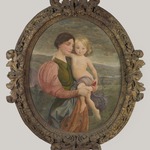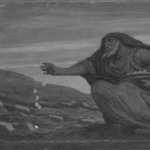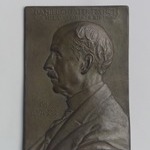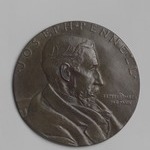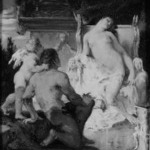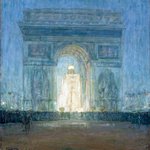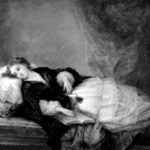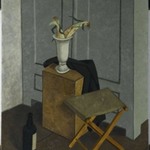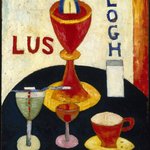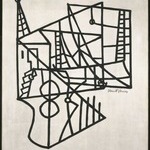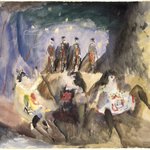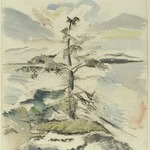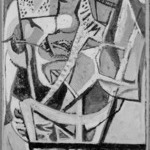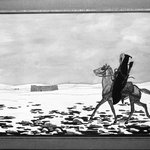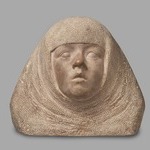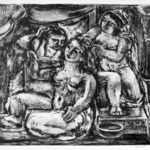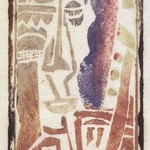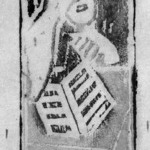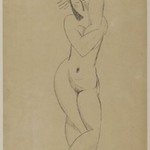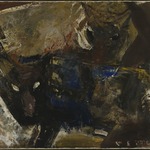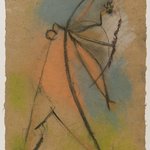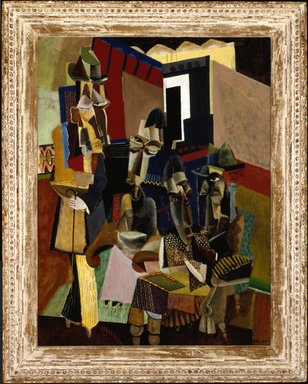
The Visit
Max Weber
American Art
Max Weber was born into an Orthodox Jewish family in Bialystok, in modern Poland. In 1891 the Webers immigrated to Brooklyn, where Max studied art at the Pratt Institute. Between 1905 and 1908, he was in Paris, where he became one of the first Americans to fully absorb Cubism. The Visit is a Cubist domestic scene, probably depicting a courtship or a Shabbat (Sabbath) gathering—the men’s clothing and hats are typical of Jewish Orthodox dress. Weber began painting nostalgic scenes of Jewish domestic life in 1918, possibly in response to the pogroms that were then decimating entire Jewish populations in his native eastern Europe.
MEDIUM
Oil on canvas
DATES
1919
DIMENSIONS
40 x 30 in. (101.6 x 76.2 cm)
frame: 47 3/4 x 38 1/4 x 4 in. (121.3 x 97.2 x 10.2 cm) (show scale)



SIGNATURE
Signed lower right: "Max Weber 1919"
COLLECTIONS
American Art
ACCESSION NUMBER
1992.11.30
CREDIT LINE
Bequest of Edith and Milton Lowenthal
MUSEUM LOCATION
This item is not on view
CAPTION
Max Weber (American, born Russia, 1881–1961). The Visit, 1919. Oil on canvas, 40 x 30 in. (101.6 x 76.2 cm). Brooklyn Museum, Bequest of Edith and Milton Lowenthal, 1992.11.30 (Photo: Brooklyn Museum, 1992.11.30_SL1.jpg)
IMAGE
overall, 1992.11.30_SL1.jpg. Brooklyn Museum photograph
"CUR" at the beginning of an image file name means that the image was created by a curatorial staff member. These study images may be digital point-and-shoot photographs, when we don\'t yet have high-quality studio photography, or they may be scans of older negatives, slides, or photographic prints, providing historical documentation of the object.
RIGHTS STATEMENT
No known copyright restrictions
This work may be in the public domain in the United States. Works created by United States and non-United States nationals published prior to 1923 are in the public domain, subject to the terms of any applicable treaty or agreement.
You may download and use Brooklyn Museum images of this work. Please include caption information from this page and credit the Brooklyn Museum. If you need a high resolution file, please fill out our online application form (charges apply).
The Museum does not warrant that the use of this work will not infringe on the rights of third parties, such as artists or artists' heirs holding the rights to the work. It is your responsibility to determine and satisfy copyright or other use restrictions before copying, transmitting, or making other use of protected items beyond that allowed by "fair use," as such term is understood under the United States Copyright Act.
The Brooklyn Museum makes no representations or warranties with respect to the application or terms of any international agreement governing copyright protection in the United States for works created by foreign nationals.
For further information about copyright, we recommend resources at the United States Library of Congress, Cornell University, Copyright and Cultural Institutions: Guidelines for U.S. Libraries, Archives, and Museums, and Copyright Watch.
For more information about the Museum's rights project, including how rights types are assigned, please see our blog posts on copyright.
If you have any information regarding this work and rights to it, please contact copyright@brooklynmuseum.org.
RECORD COMPLETENESS
Not every record you will find here is complete. More information is available for some works than for others, and some entries have been updated more recently. Records are frequently reviewed and revised, and we welcome any additional information you might have.

